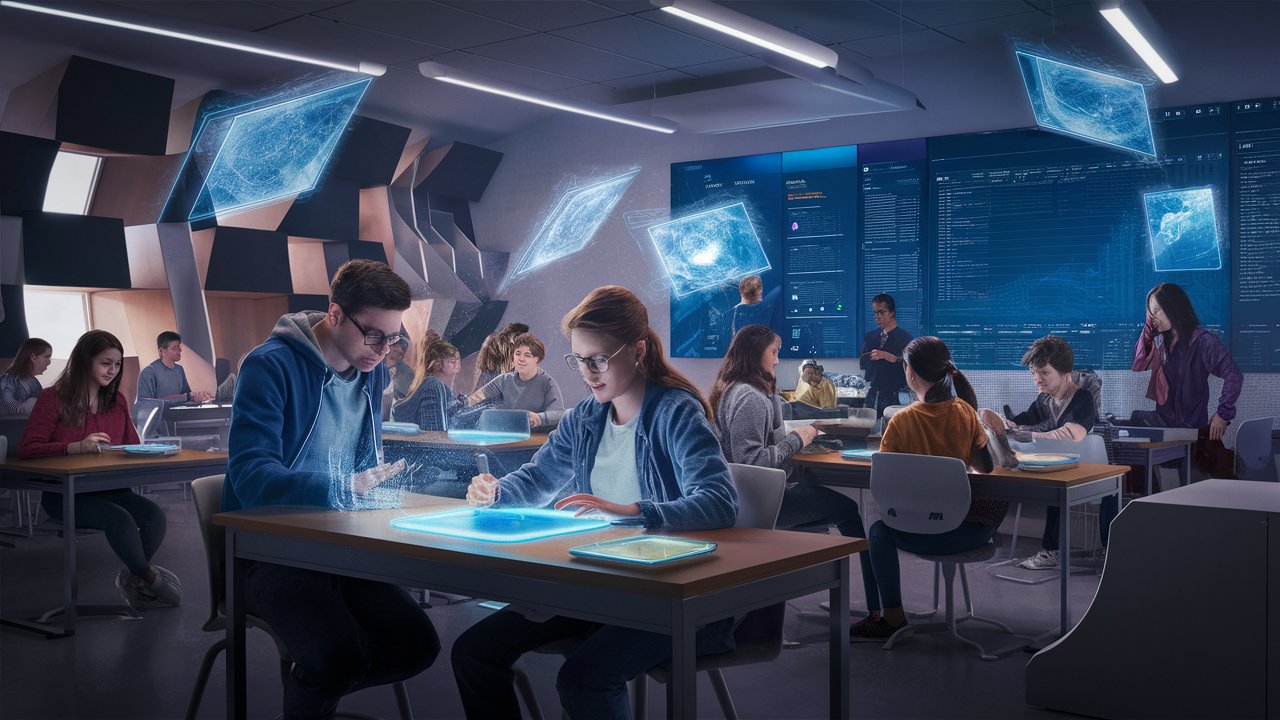The traditional classroom model, largely unchanged for over a century, is facing a crisis of relevance. Designed for the industrial age, its rows of desks, teacher-centric instruction, and standardized pace often fail to prepare students for the dynamic, problem-solving demands of the 21st century. In response, a powerful new concept is emerging from educational thought leaders: Classroom 60x. This is not merely a cosmetic redesign or a simple technology upgrade. Classroom 60x represents a fundamental philosophical shift, a holistic framework aiming to amplify the impact, engagement, and effectiveness of the learning environment by an order of magnitude—60 times. It’s about creating an ecosystem where space, technology, pedagogy, and student well-being converge to unlock potential we previously only theorized was possible. This article delves into the core principles of the Classroom 60x model and explores how it is setting a new benchmark for the future of education.
The Philosophy Behind the 60x Multiplier
The “60x” in Classroom 60x is not a literal, guaranteed statistic but a symbolic target representing exponential improvement. It challenges educators to move beyond incremental gains of 10% or 20% and to instead ask a radical question: “What would it take to make learning 60 times more engaging, 60 times more personalized, and 60 times more effective at developing critical thinkers?” This mindset breaks the constraints of traditional thinking. The multiplier applies across multiple domains: a 60x increase in student agency, where learners have real choice and voice in their education; a 60x increase in actionable data, where teachers have deep, real-time insights into each student’s understanding rather than relying on sporadic test scores; and a 60x increase in collaborative potential, where physical and digital walls dissolve to connect students with experts and peers globally. This ambitious goal forces a re-examination of every single element within the educational environment.
Deconstructing the Pillars of the Classroom 60x Model
Achieving such a monumental shift requires a synergistic approach built on several interdependent pillars. The first and most visible is the Physical and Spatial Design. The Classroom 60x abandons the static grid of desks for a agile, flexible environment. Furniture is mobile, lightweight, and reconfigurable, allowing the space to transform instantly from a lecture setting to a collaborative hub, to a quiet individual research pod, or to a presentation theater. This flexibility empowers teachers to match the learning activity with the optimal environment, fostering both collaboration and deep focus. Acoustics, lighting (both natural and artificial), and air quality are meticulously engineered to reduce cognitive load and enhance comfort, recognizing that the physical well-being of students is directly tied to their ability to learn effectively.
The second pillar is the Integration of Seamless Technology. In a Classroom 60x, technology is not an add-on or a distraction; it is as fundamental as electricity—an invisible, ubiquitous utility that empowers learning. This goes beyond simply providing tablets or laptops. It involves a robust ecosystem where high-speed connectivity, cloud-based platforms, interactive displays, and educational software are fully integrated. This allows for immersive experiences through virtual and augmented reality, connects students to global learning communities, and provides the tools for creating knowledge rather than just consuming it. Most importantly, this technology generates a continuous stream of formative assessment data, giving educators a 60x clearer picture of student progress and enabling timely, precise interventions.
The third and most crucial pillar is Pedagogical Shift. The most advanced classroom and technology are wasted without a corresponding evolution in teaching methodology. The Classroom 60x model champions student-centered pedagogies like project-based learning (PBL), inquiry-based learning, and design thinking. The role of the teacher evolves from a “sage on the stage” to a “guide on the side”—a facilitator, a coach, and a co-learner who curates experiences and asks probing questions. The curriculum emphasizes the development of the 4Cs: Critical Thinking, Communication, Collaboration, and Creativity. Learning becomes authentic and connected to real-world problems, making it inherently more meaningful and engaging for students, thus driving that 60x increase in motivation and depth of understanding.
The Human Element: Teacher and Student Roles in a 60x Environment
A common fear surrounding such transformative models is the potential dehumanization of education. However, the Classroom 60x model argues the exact opposite. By automating administrative tasks and leveraging technology for differentiated instruction and data analysis, the model actually frees up the teacher’s most valuable asset: time for meaningful human interaction. Teachers can spend less time grading repetitive worksheets and more time conducting one-on-one conferences, mentoring small groups, and building strong, supportive relationships with each student. For the student, the shift is from passive recipient to active constructor of knowledge. They are given autonomy, encouraged to pursue their passions within the curriculum framework, and taught to take ownership of their learning journey. This fosters intrinsic motivation, resilience, and self-advocacy—skills that yield a return far greater than 60x over a lifetime.
Conclusion: The Journey to 60x
Implementing a true Classroom 60x is not an overnight task; it is a journey that requires visionary leadership, sustained investment, and ongoing professional development for educators. It is a cultural shift as much as a physical and technological one. Schools may begin by piloting a single 60x classroom or incorporating one principle, such as flexible seating or a new PBL unit, into their practice. The goal is not perfection but continuous progress toward that multiplier of impact. The Classroom 60x model presents a compelling and necessary vision for the future of education—a future where classrooms are dynamic, responsive, and human-centered ecosystems designed not just to inform students, but to transform them. By embracing this holistic approach, we can finally create learning environments that are not just a reflection of the past, but a brilliant prototype for the future.
FAQ Section
Q1: Is “60x” a scientifically proven result?
A: No, the “60x” is primarily a symbolic and aspirational target. It serves as a powerful metaphor to encourage educators to think beyond marginal improvements and aim for transformative change in student outcomes, engagement, and skill development. The focus is on the order-of-magnitude shift in philosophy and practice.
Q2: Isn’t the Classroom 60x model too expensive for most schools?
A: While a full-scale implementation requires investment, the philosophy can be adopted incrementally and creatively. It starts with pedagogical shifts that cost nothing. Many aspects, like reconfiguring existing furniture, utilizing free digital tools, and adopting project-based learning, require minimal budget. Schools can prioritize investments over time, starting with the most impactful elements like professional development or a robust Wi-Fi network.
Q3: Does this model mean students are just on computers all day?
A: Absolutely not. The Classroom 60x model advocates for a balanced approach. Technology is a tool to enable deeper, more personalized learning and connection, not a replacement for human interaction. The model emphasizes hands-on projects, face-to-face collaboration, Socratic discussions, and physical movement. Technology is used purposefully when it adds the most value.
Q4: How does Classroom 60x cater to students with different learning needs?
A: This is one of its greatest strengths. The flexibility inherent in the model is a boon for differentiation. The agile physical space allows for creating quiet zones or collaborative areas as needed. The technology enables software to provide support for struggling readers (e.g., text-to-speech) or advanced challenges for gifted students. The teacher, freed from whole-class lecturing, can provide targeted, small-group and individual instruction.
Q5: What is the first step a teacher can take to move toward a 60x classroom?
A: The most effective first step is to shift the pedagogy. A teacher can begin by designing one project-based learning unit for the year that incorporates student choice, addresses a real-world problem, and uses technology for creation and research. Even in a traditional classroom, this change in approach captures the core spirit of the 60x model and can yield significant increases in student engagement.




